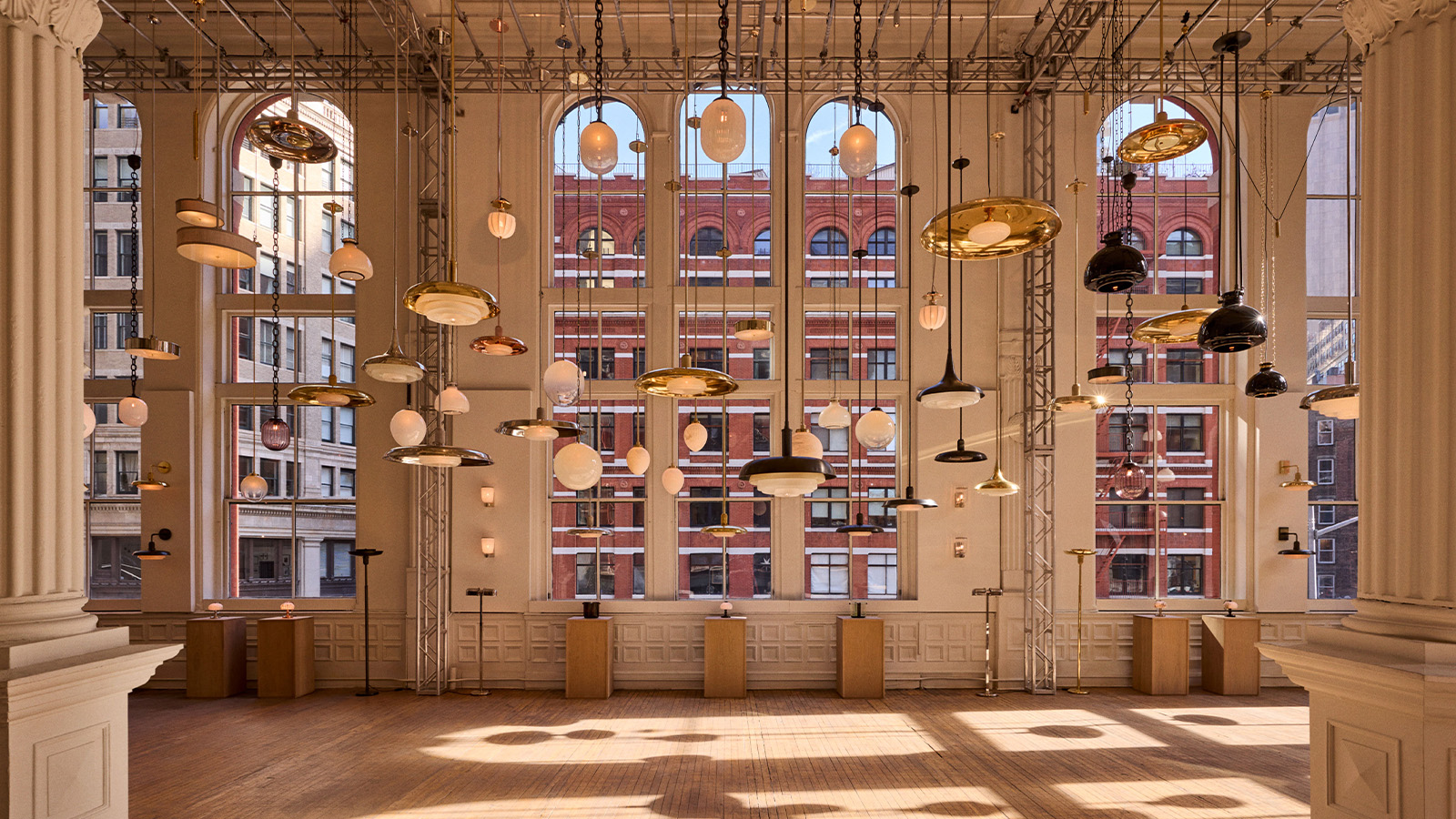
As the days grow increasingly shorter in the northern hemisphere, a renewed focus on lighting our spaces to cope with the darkness comes to the fore. For Robin Standefer and Stephen Alesch, founders of New York design studio Roman and Williams, this offered a perfect opportunity to draw attention to the impressive array of lighting products they’ve developed over more than two decades.
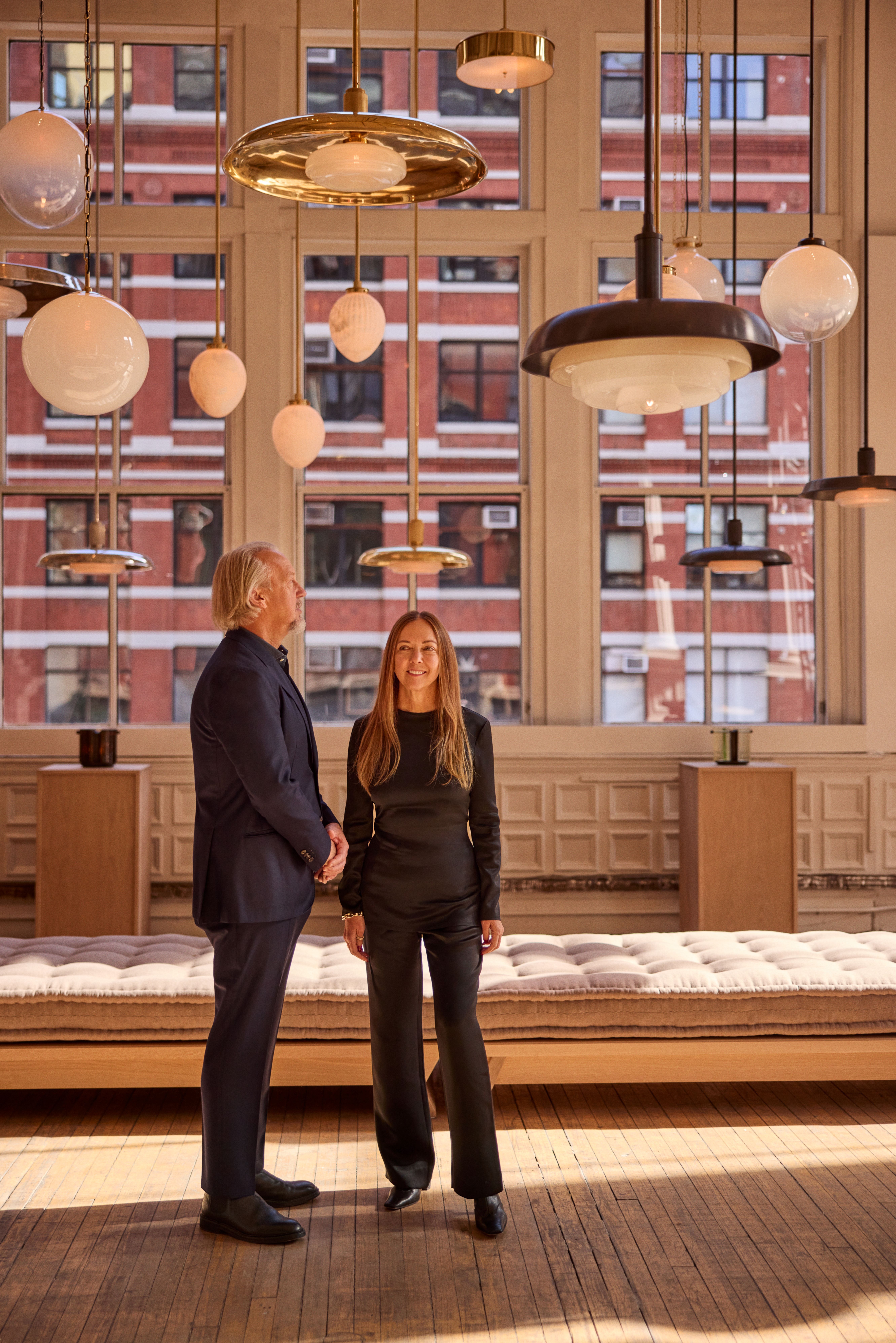
The husband-and-wife duo are renowned for their fastidious use of atmospheric lighting, whether at the Boom Boom Room nightspot or the British Galleries at The Met. They’ve been designing their own lights for both residential and commercial spaces ever since founding their studio in 2002, and all of the products are handcrafted by specialised artisans around the world.
An exhibition of these myriad designs opens to the public on 19 November 2024, and in true Roman and Williams fashion, it’s a dramatic display of just how impactful and even spiritual lighting can be – particularly during the winter months.
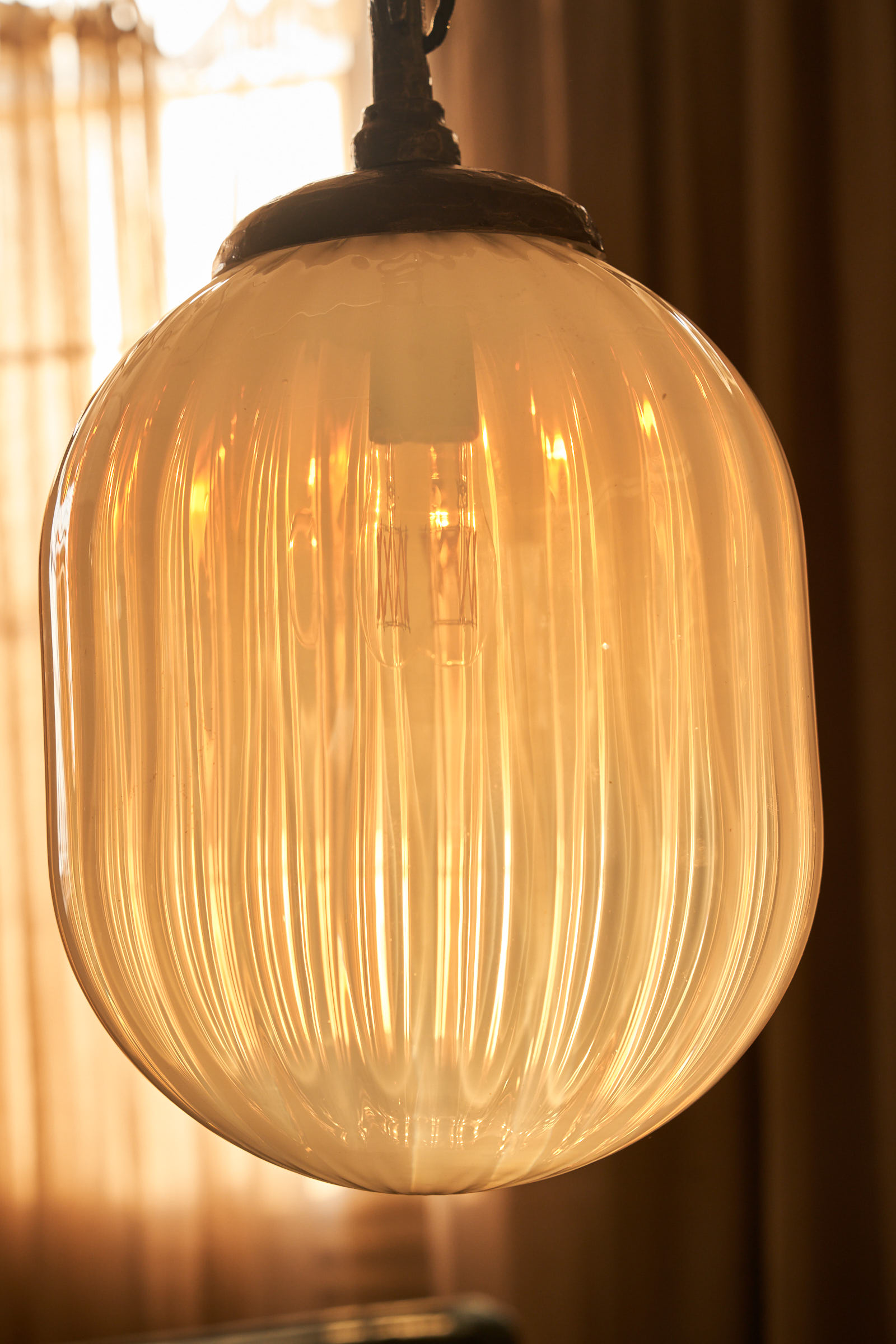
Influenced by Emily Dickinson’s 19th-century poem, There's A Certain Slant of Light, the showcase is housed on the second floor of the former New York Mercantile Exchange in Tribeca, completed in 1886 by architect Thomas R Jackson – who coincidentally designed the Arnold Constable & Co building that houses the Roman and Williams Guild on Canal Street. The 30ft ceilings and elongated windows add to the drama of the installation, which involves 100 variations of original Roman and Williams lights – the majority of which are suspended above the viewer to create what Standefer describes as a ‘celestial’ installation.
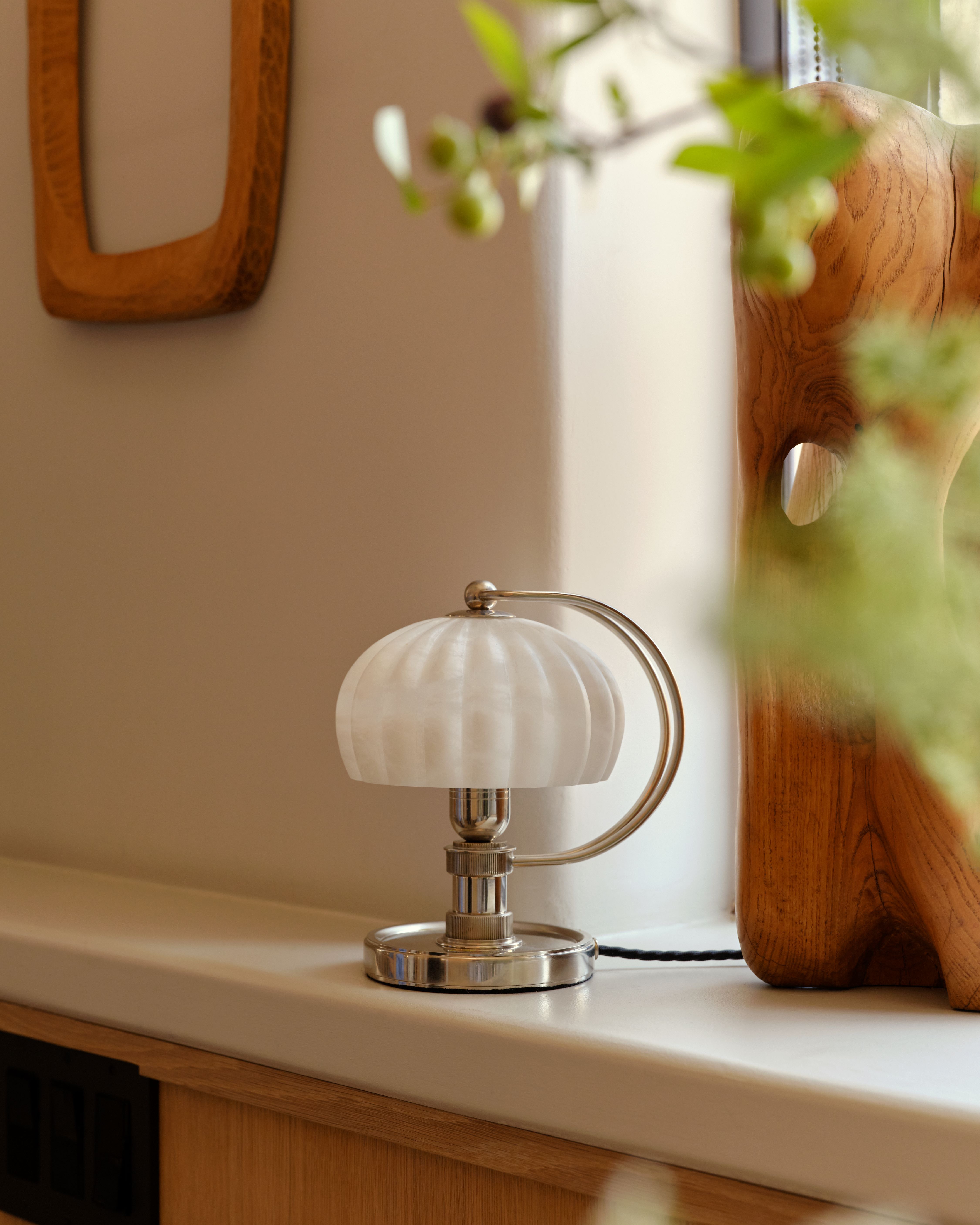
The exhibition also marks the introduction of 12 new lighting iterations, which blend industrial fixtures with shapely shades and diffusers in a unique way. Take the Axil Pendant, a botanical-inspired design with a curved metal shade that wraps a trio of nested glass diffusers. Then there’s sconces and lamps of the Lentium collection, comprising cast-bronze supports with semi-cylindrical, bubbled glass diffusers. In the Dahlia Table Lamp, a delicate floral alabaster shade is positioned on a metal stand, while the nautical Porto Sconce comes with a rippled blown glass shade that’s available in a new pale aubergine colourway.
Each of these designs, along with others in Roman and Williams’ back catalogue, appears in various finishes, colours, and sizes within the exhibition.
‘A Slant of Light’ is on view at 6 Harrison Street until 1 December 2024. We spoke with Robin Standefer about the show.
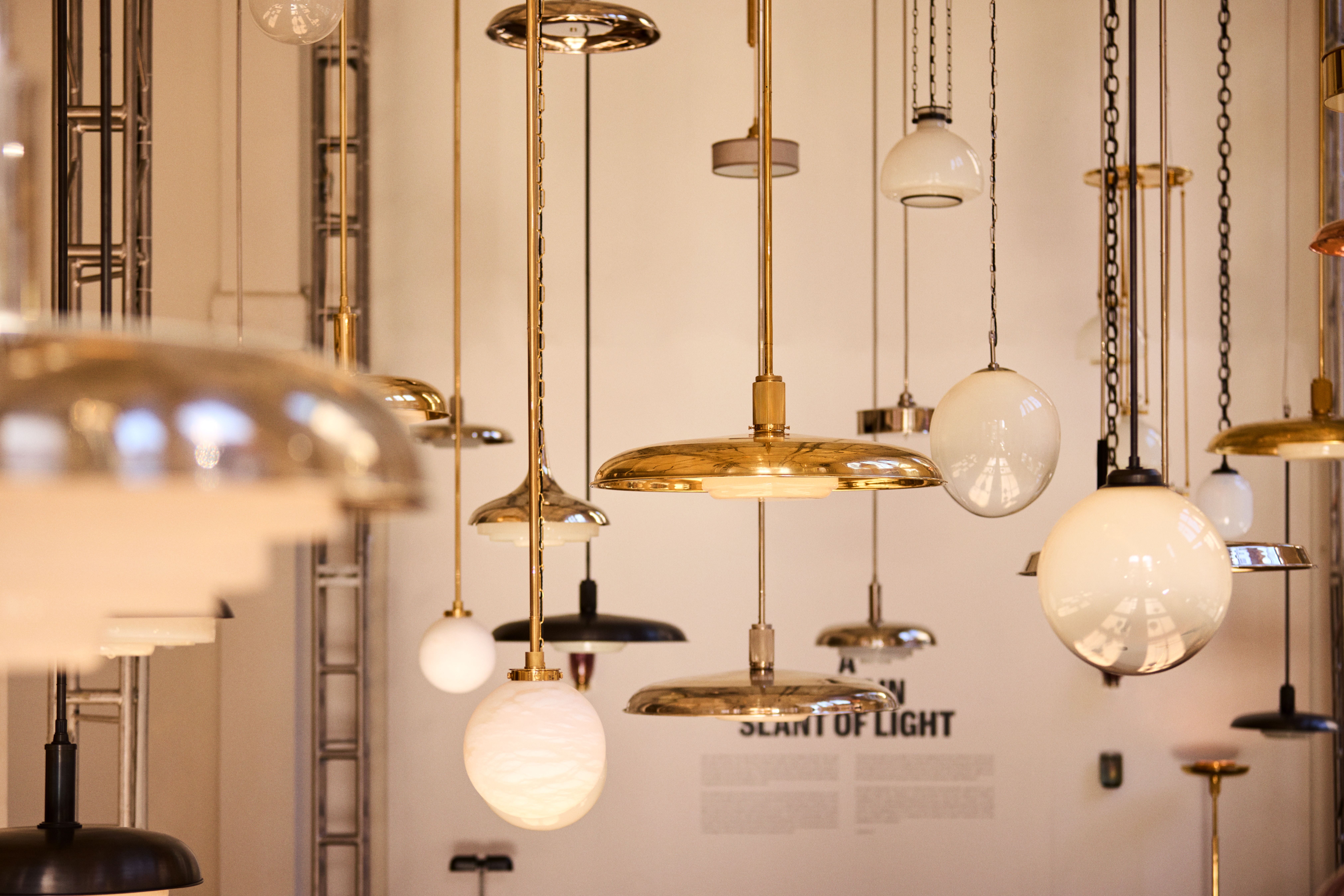
In conversation with Robin Standefer
Wallpaper*: Tell us about the exhibition ‘A Slant of Light’. What was the concept and what were you hoping to achieve?
Robin Standefer: The poetry of this exhibition is about time of day and about the mood of the season. And that's why the poem There's A Certain Slant of Light has always been very profound to me, growing up in the Northeast and always loving Emily Dickinson. [Think about] as the time changes, as the mood changes, as the light changes and darkness falls at 4.30pm – what that does to us emotionally, and how powerful the experience of electric light can be at that moment. So that's why we created this exhibition. And so to see it, I have to tell you, Dan, truly, when I was there the other day installing, and I was there from 3.30 to 5pm, I was like, ‘it's working, it's profound’. To have a sensory experience of an exhibition that you're creating, that's something you can hope for, but not really be certain [it] will deliver, right? And it does.
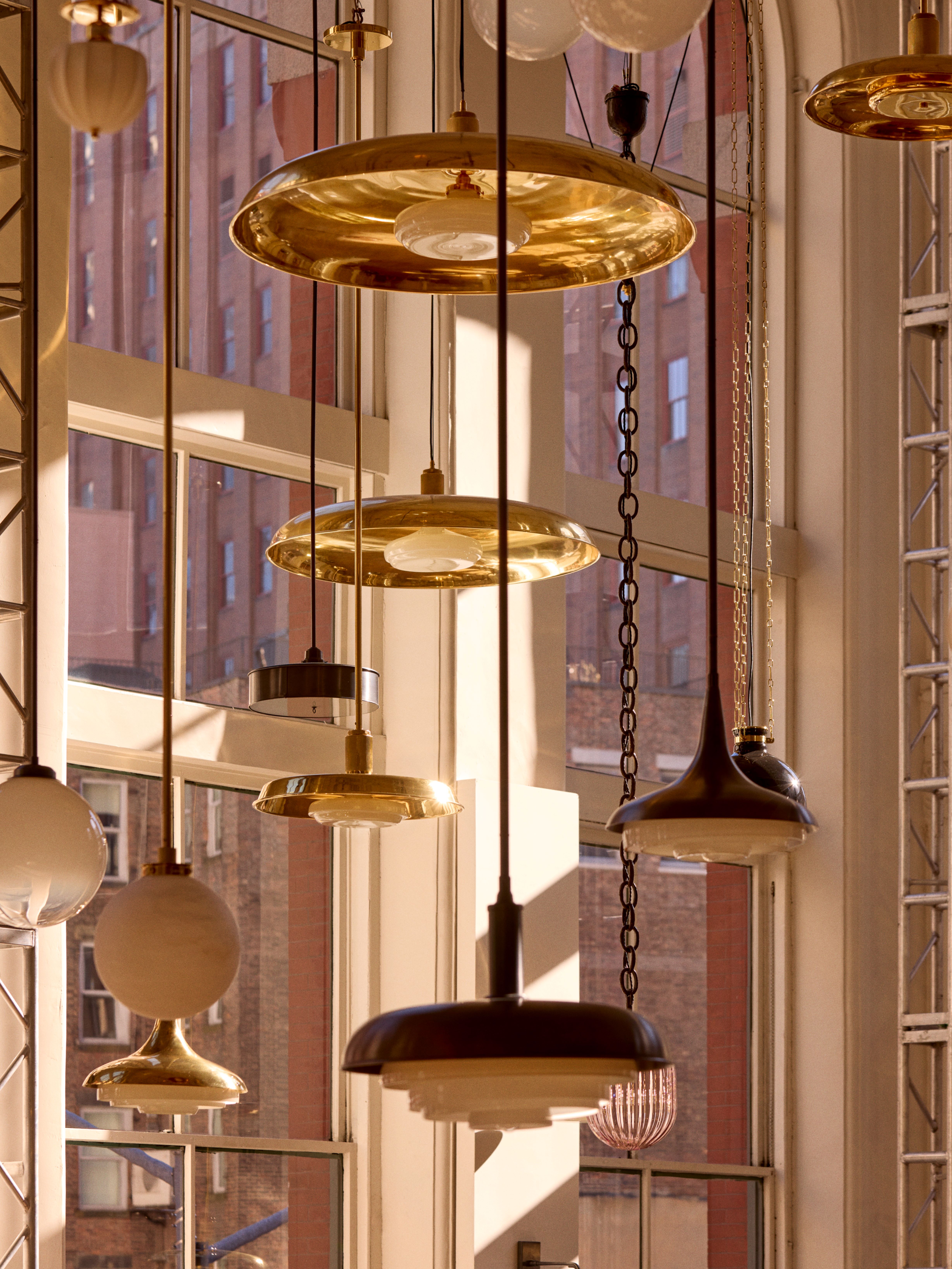
W*: How did you decide on the venue, and what does the space add to the exhibition?
RS: It's a sensory and emotional experience to be in this incredible 1886, 30ft space that Thomas Jackson designed. He also designed the building that our Guild is in, which was a beautiful kismet discovery after we found this space. There's something about these classical but utilitarian buildings from the late 19th century that Stephen and I are so enamoured with. And they do have this profound, beautiful Beaux-Arts classical detailing in the architecture, and they create a real contrast to the modernism of our lights. That tension is really strong.
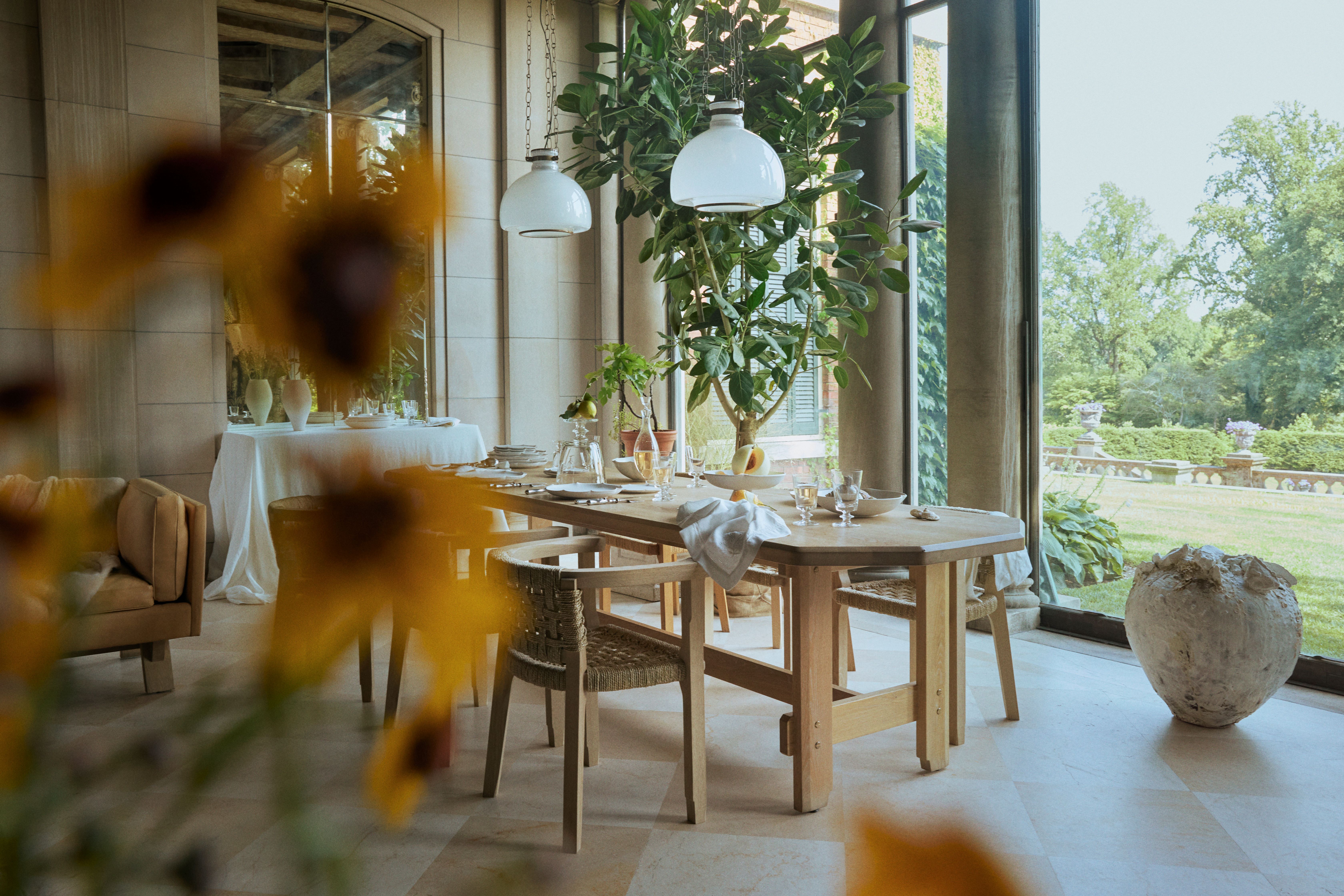
W*: What is it about lighting specifically that’s so interesting to you?
RS: Stephen and I have been designing lights for the better part of almost 30 years. Designing things that heighten the senses has always been particularly attractive to us and interesting. We have a collection of furniture and a collection of accessories, but for lighting– both candle and electric light – it's technically challenging. There are compliance issues, there are design issues, there are issues about how things dim. There are issues with LED bulbs. So there's that whole technical component, and there's the incredible emotional component of how those lights make you feel: the scale of them, where they're best placed, the intimacy of lights in a bedroom, at a dinner party, in a commercial space, in a restaurant.
As a designer, the thing people say to me the most is: ‘Oh, it's so hard to find the perfect light. You make such beautiful lights. You design spaces that have incredible layers of atmosphere and the lighting. How do you do it?’ And I started to want to be generous about making those lights for people in their homes, right? And making those lights for designers to use, and even blowing glass of a certain tonality that allows the colour temperature of the LED light to really be warm and inviting. So all of this led to us wanting to show that we've designed about 100 lights, give or take.
There's a lot of ways to count, because we have a lot of different finishes and sizes in a collection, and there’s this idea of unity and variety. It’s like botany, and we think of lights almost as a genus of plants. There's this evolution of different sizes, types, colours, as though you're looking at a family tree. This exhibition was about allowing people to really experience the lights, almost in a gallery setting.
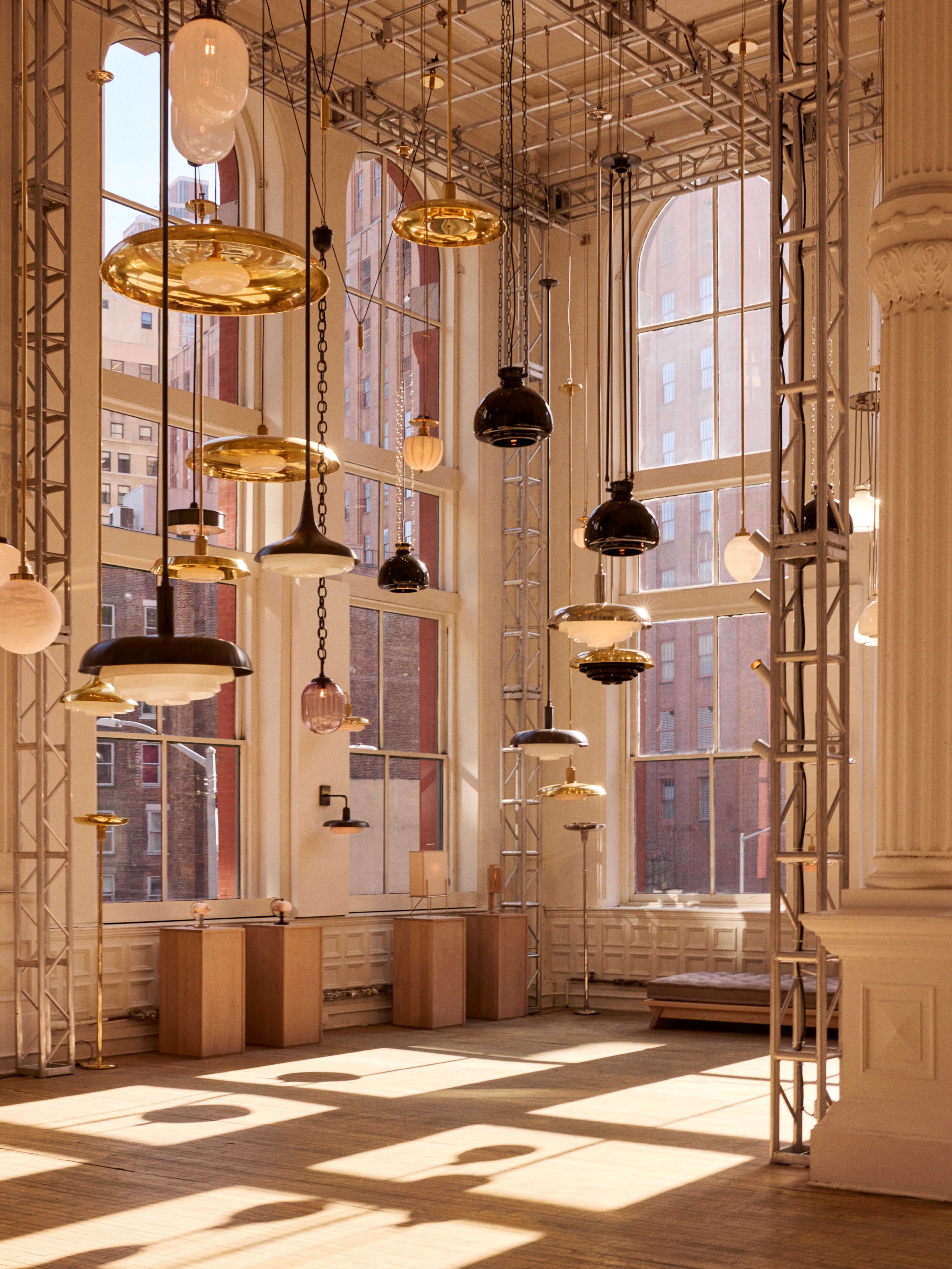
W*: Is there a particular stylistic thread that unites all of these pieces?
RS: I think the 12, again like a tree, have different branches. There's not one light that doesn't have some sort of typology from the previous things we're making, and that's what I mean by the family tree and this sense of DNA. Stephen and I see the lights as our children.
W*: And what was the intention behind combining all of these very different stylistically lights into one installation? How did it all come together?
RS: One of the reasons was to create a world of 100 lights, because it's really celestial. When you look at the night sky, you see brighter stars and less bright stars, and constellations, and they're all quite different. But they're all ‘hanging’ together, if you will. Our lights, for us, have a material synergy, an architectural and a natural synergy. They're all quite different, but they definitely have a connection. So we decided to hang them all in this massive space, and they're random, as opposed to being grouped by style or fixture type. I really want this to be more of a distinct sensory exhibition, and we even have a daybed in our collection called the Espalda that I put underneath the lights so you could lie down and look up at them.
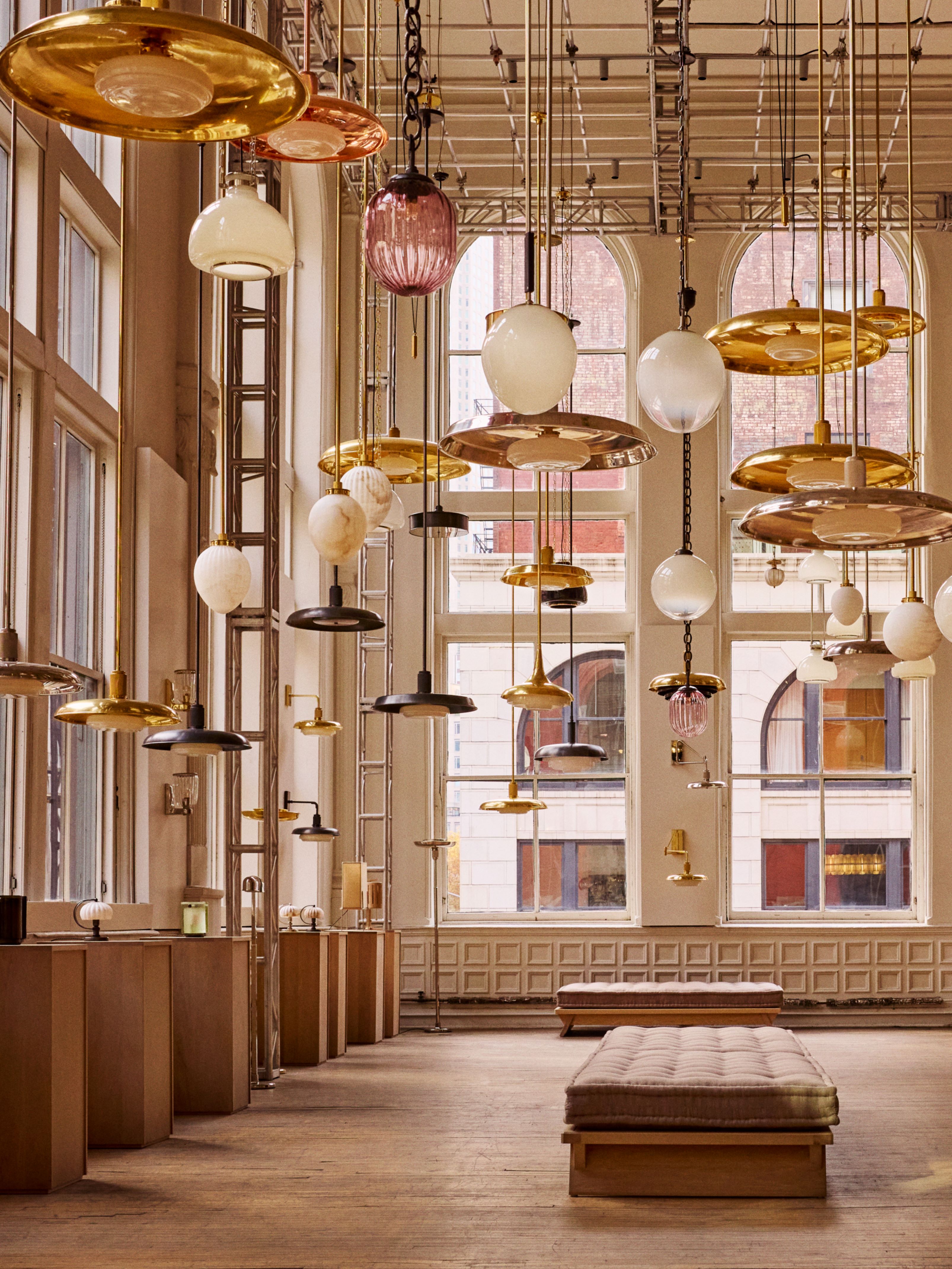
W*: What does it feel like to walk into that space? What atmosphere does it create for you, personally?
RS: It’s really dramatic, arresting and poetic, when you're in a space that is that singular, has that kind of scale, and has the elegance of those massive arched windows. It’s almost like a concert, because there's all this truss work to be able to make the massive grid to hang these 100 lights. But it starts to disappear, which is why it's so beautiful at the end of day. Because as those lights come up and you are surrounded by them, you start to experience them as more natural or celestial than human made.
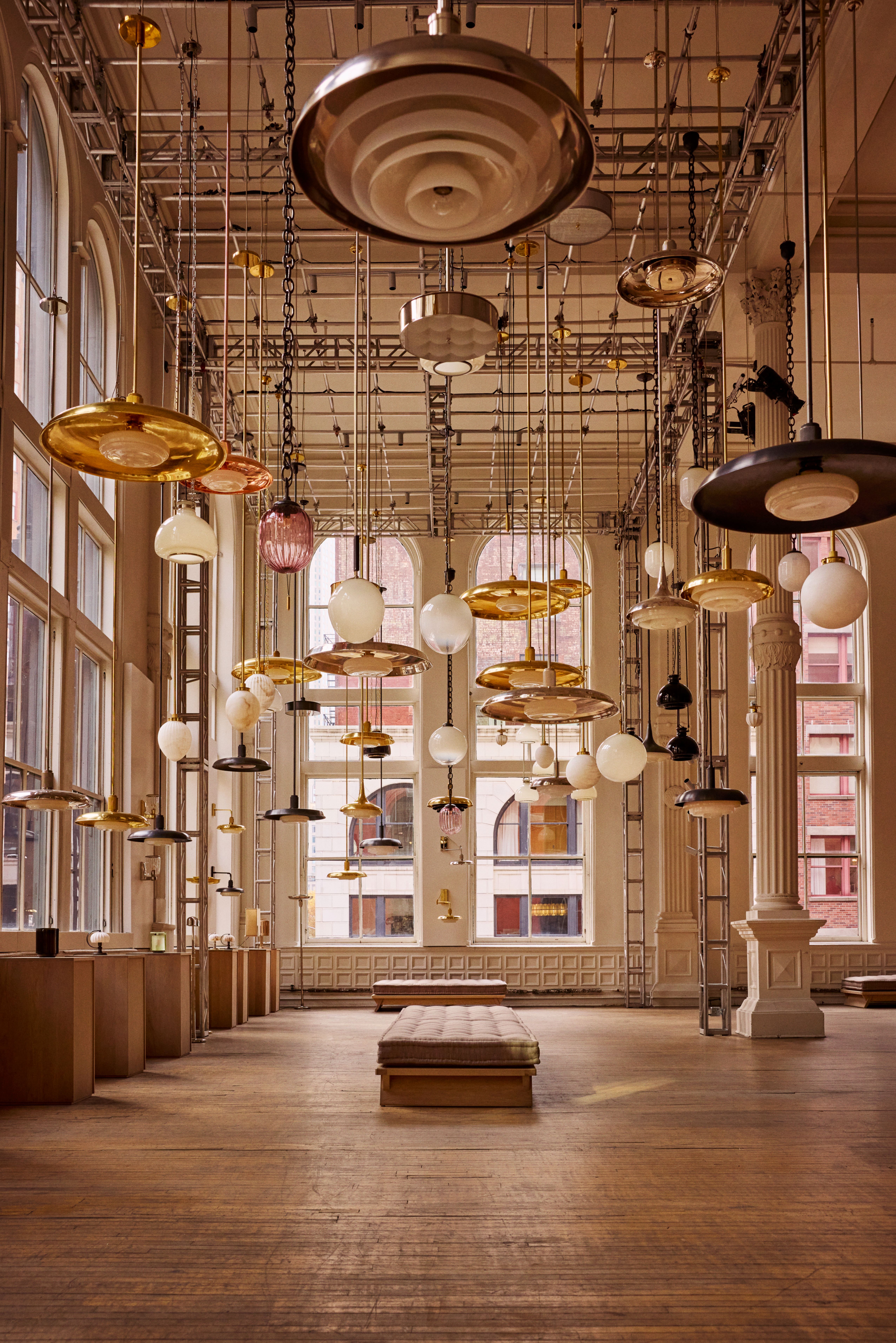
W*: Craftsmanship is such an important part of Guild Gallery and all of your products. How do you find the right artisans and craftspeople to transform your design and specifications into commercial products?
RS: It's an intensive process and critical process. Besides the artistry of creating the designs and forms, and then the experience about how the light is performing from these objects, the craftsmanship is everything. I want these lights to outlive us. I really want them to be highly collectible, and so we are very lucky to have a collection of artisans around the world. Many of our metal lights are made in France. But we blow our glass in Brooklyn, and there's a guy in Northern California that also does some beautiful glass blowing. We have a foundry we use in Philadelphia, and another in France.
I have an incredible story to tell you. In the 18th century, Napoleon changed the recipe for how brass and bronze were defined in France, and which was mostly for weaponry and swords. Brass is a combination of copper and zinc, and he wanted a higher copper content, which made it much warmer. This is well documented. So if you look at brass made in the United States or in Asia, you will see it's greener versus the French brass, which is warmer. I went down the rabbit hole when I learned this, and now it’s very important to me to make our lights in France.
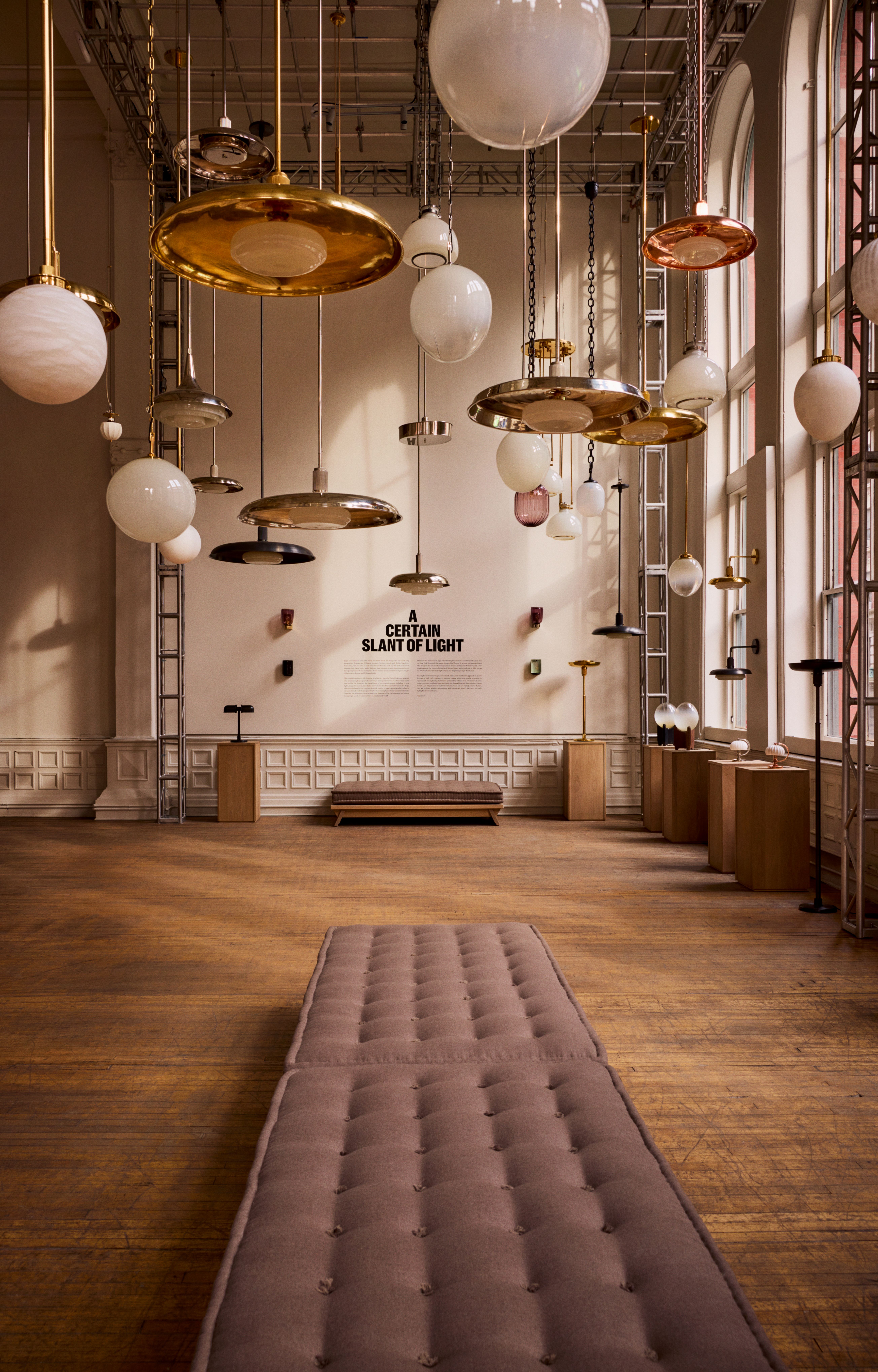
So we've been focused on finding people that are focused on doing that. I'm really quite proud of this collection because in each category –glass, cast glass, cast metal – it really pushes the boundaries of craftsmanship. So when you ask, ‘how do we find them?’, it’s just about travelling the world to see who cares enough, who’s focused enough, and who’s still doing it to such a high standard. That kind of precise manufacturing, that artistry, that skill, is really difficult.
We’re lucky enough to have customers – and I think this is important to talk about commercial issues – that say, ‘Oh, there's some spun lights that are a quarter of the price, but they're not made this way. They're not supporting this level of artisanal craft. They're not supporting this level of focus and design.’ Every one of our lights is stamped and signed, and we're trying to create something that has that level of respect, and we think that our customers deserve it.







